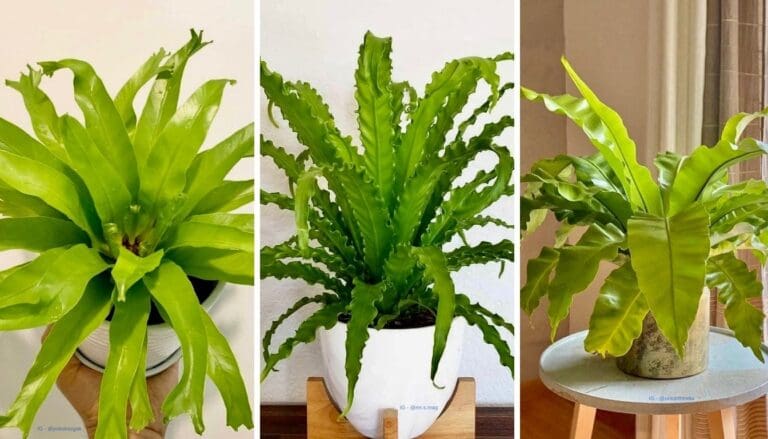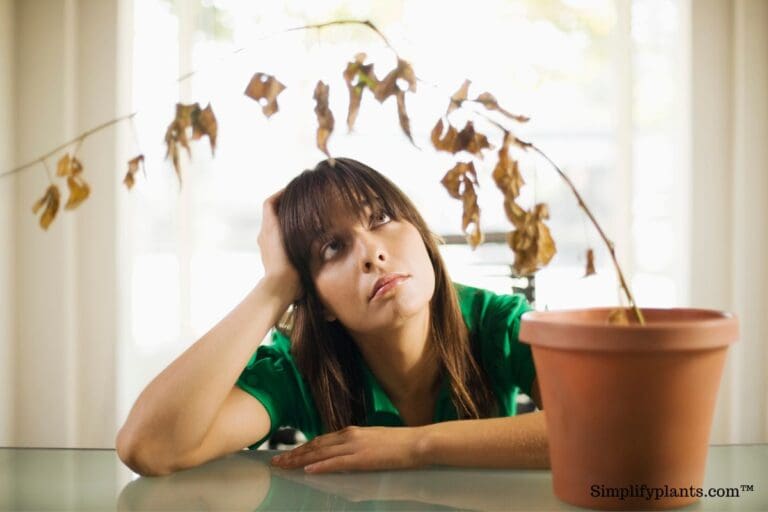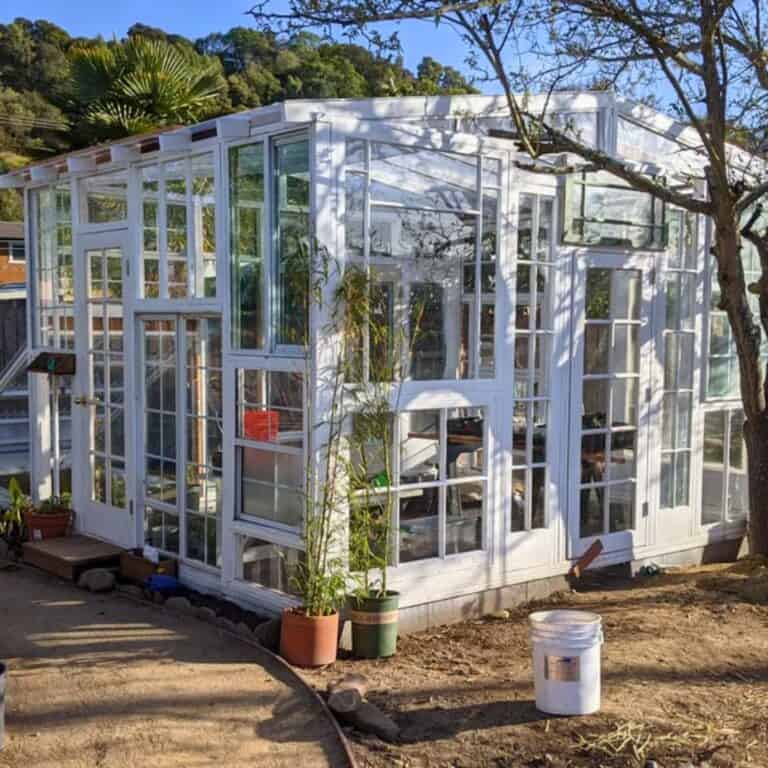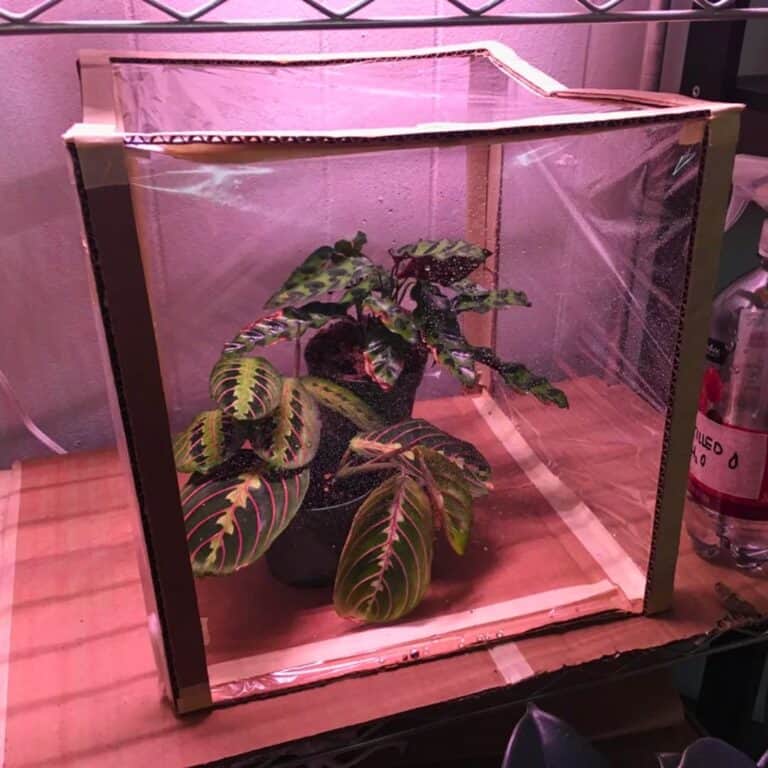7 Ways to Water Houseplants Smarter During Summer
When summer rolls in, my houseplants definitely need some extra attention. The heat and those long, bright days dry out the soil way faster than I expect.
I want to share simple ways to water houseplants smarter so they can thrive all season. A few tweaks, and my plants get just the right amount of water, even when it’s blazing outside.
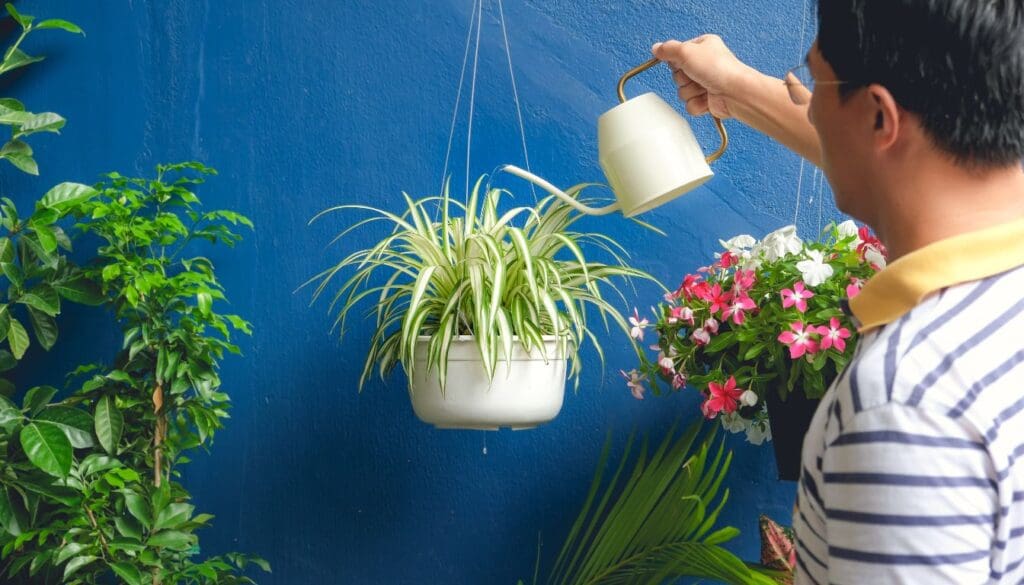
Please note: Simplify Plants is reader-supported. As an Amazon Associate, I earn from qualifying purchases made by our readers with no extra cost added to you all! Some links in the post are affiliate links and I get a commission from purchases made through links in the post.
1) Check soil moisture with a moisture meter before watering
I always check the soil before watering my houseplants. Using a moisture meter is honestly the easiest way for me to know if they’re actually thirsty.
I stick the meter halfway into the soil. It gives me a clear reading in just a few seconds.
If the meter says the soil is dry, then it’s safe to water. This keeps me from watering when the soil’s still damp, which is a classic way to mess things up.
Moisture meters work for all kinds of houseplants, from succulents to ferns. I use mine for both tiny pots and big ones.
This little tool takes out the guesswork. I like seeing how the soil changes after I water, too—it helps me learn my plants’ patterns.
Since I started using a meter, I’ve had fewer yellow leaves and way less root rot. For me, it’s a must-have, especially in summer.
It just makes watering less stressful. Every plant lover should have one, honestly.
2) Water early in the morning to reduce evaporation
I try to water my houseplants early in the morning. This helps the water soak in before the sun gets too intense.
When I water later in the day, I feel like half the moisture just disappears. Morning watering gives my plants a chance to drink before things heat up.
If I water in the afternoon, I notice the leaves sometimes look stressed. Evaporation happens faster when it’s hot, so less water actually reaches the roots.
Water droplets on leaves at midday can even cause spots or damage because the sun’s so strong. I’ve found that watering in the morning keeps the leaves looking a lot better.
I set a reminder on my phone to keep this habit going. It doesn’t take long, and my plants really do seem to appreciate it.
Honestly, my mornings feel calmer when I spend a few minutes with my plants. If you’re busy, just get the watering done first thing and you’re set.
3) Use room temperature water to avoid shocking roots
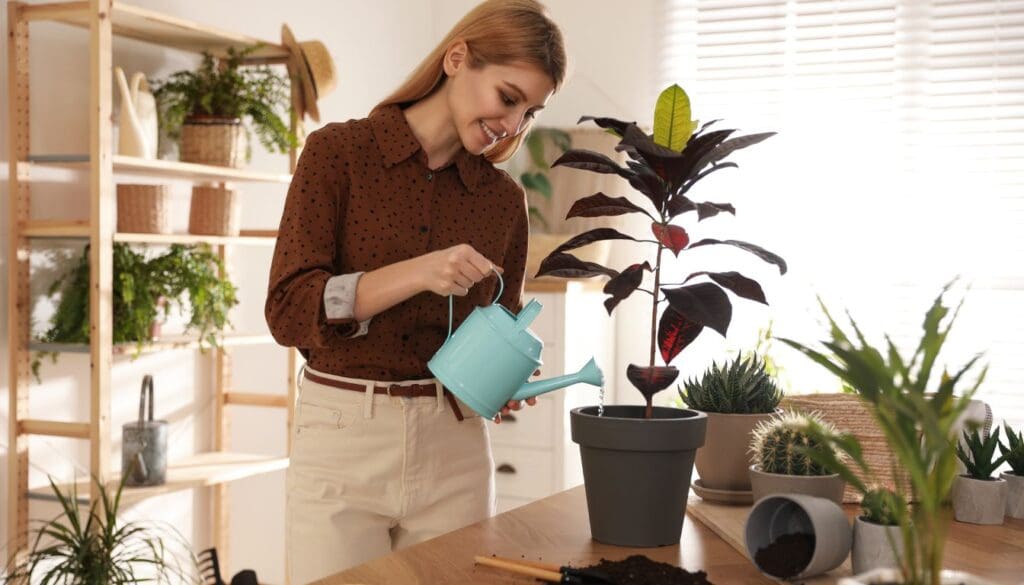
I always aim for room temperature water when I water my plants. Cold or hot water can really shock their roots.
If the roots get shocked, they might not absorb water as well. Sometimes, it even slows down growth or causes damage.
I usually let my tap water sit out for a few hours. That way, it’s the same temperature as my home and some of the chlorine can evaporate.
It’s easy—I just fill a watering can and leave it on the counter. By the time I’m ready, the water’s perfect.
Room temperature water is especially nice in summer. My plants seem to perk up faster, and I like knowing their roots aren’t getting a shock.
4) Apply a layer of mulch to retain soil moisture
I’ve found that mulching my houseplants really helps keep their soil from drying out too fast. A thin mulch layer acts like a shield between the sun and the dirt.
This keeps water in the soil longer, so I don’t have to water as often. Common types of mulch I use are small pebbles, coconut coir, or even dried leaves.
Each one helps slow down evaporation and keeps the soil from getting crusty. I usually spread about a half-inch of mulch, but I’m careful not to pile it against the plant stem.
Light-colored mulch can reflect sunlight and keep the soil cooler, which is a nice bonus in summer. Mulch also just makes my planters look tidier, honestly.
It’s an easy trick that works for most indoor plants. I just check under the mulch now and then to make sure the soil’s not too wet or bone dry.
5) Group plants with similar water needs together
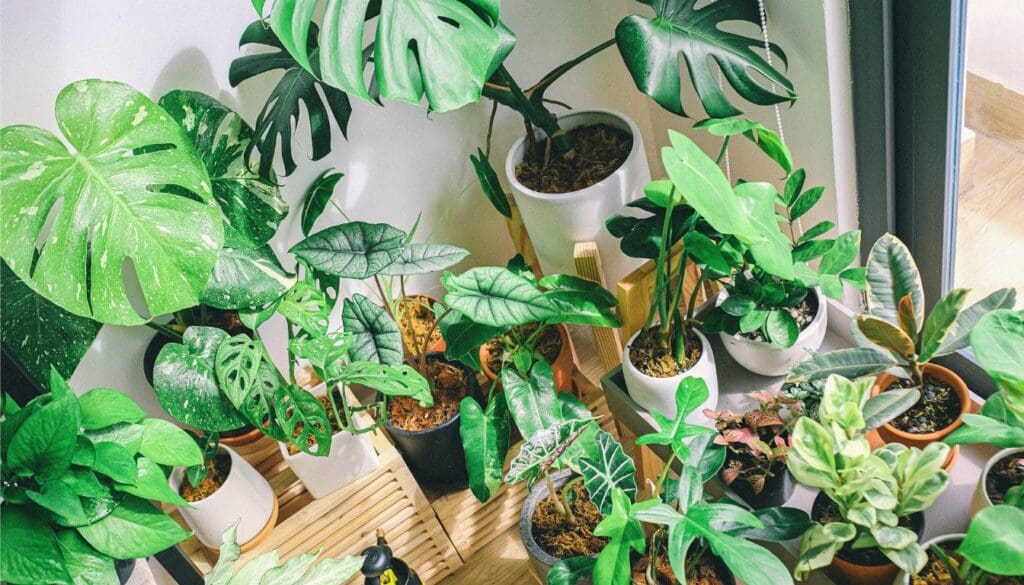
I find it way easier to care for my plants when I put ones with similar water needs together. No more guessing or mixing up who needs what.
If I group water-loving plants like ferns or peace lilies, I can water them all at once. Succulents and cacti go together since they need less water.
Grouping plants also helps with humidity. Sometimes, my grouped plants just look healthier—they kind of create their own little microclimate.
It’s also easier to remember who needs attention. If one plant looks dry, its neighbors probably do too.
Whenever I get new plants, I check their tags for water needs and try to match them up. This keeps my routine simple and less stressful.
Grouping by water needs is a small thing, but it really keeps my plants happier in summer. I wish I’d started sooner!
6) Water deeply rather than frequently for stronger roots
When I water, I try to give my plants a deep soak instead of just a little splash. Deep watering means the whole root system gets a drink.
If I only water a little, just the top soil gets wet and the roots stay shallow. Shallow roots dry out so fast, especially in summer.
By watering deeply, my plants handle hot, dry days better. I usually water until I see a bit run out the bottom.
I let the soil dry out a bit between waterings. This keeps the roots from sitting in soggy soil and helps avoid root rot.
Taking the time to water deeply helps build strong roots for the long run. My plants stay tougher, and honestly, I don’t have to worry about them as much.
7) Use self-watering pots for consistent moisture

I really like using self-watering pots—they keep my plants happy, even when it’s scorching outside. These pots have a little water reservoir at the bottom, so the soil just wicks up what it needs, and I don’t have to stress if I forget a day.
Self-watering pots are easy to use. I just fill up the bottom, and that’s it. No more daily watering or worrying about drowning the roots.
Summer heat dries soil so fast. If I’m out or just busy, self-watering pots give me peace of mind because my plants stay hydrated and I don’t come home to crispy leaves.
I find these pots especially handy for those thirsty plants or big pots that dry out in no time. It’s a small upgrade, but it honestly saves me time and a bit of plant-related anxiety.
Every few days, I peek at the water level. Just to make sure the reservoir isn’t bone dry. If the pot’s outside, I’ll move it to a shadier spot so the water doesn’t disappear too quickly.
Self-watering pots aren’t complicated. They’re perfect for beginners or anyone who wants plant care to feel a bit more relaxed. If I’m starting out, this is one of my favorite summer hacks.
Understanding Houseplant Water Needs
I notice my houseplants need more attention when the weather gets warm. It’s important for me to know how heat affects soil moisture and how to tell if I’m watering too much or too little.
How Summer Affects Indoor Plant Moisture
During summer, higher temperatures and more sunlight make water evaporate faster from soil and leaves. I often have to water my plants more often than in cooler seasons.
Even plants near sunny windows or air vents can dry out twice as fast. Humidity also changes indoors, which can stress some plants.
Dry air from air conditioning pulls moisture out of both the soil and the plant itself. For example, my ferns usually need more frequent misting in hot months.
I always check the soil with my finger about an inch deep to see if it feels dry. Each type of plant is different; succulents still need less water, while tropical plants may need more.
Recognizing Signs of Overwatering and Underwatering
Overwatering can drown roots and cause yellow leaves or mushy stems. I avoid this by making sure pots have drainage holes and by emptying any water that collects in trays under my pots.
Underwatering usually looks like dry, crispy leaves or soil pulling away from the sides of the pot. Sometimes, flowers drop early or leaves start to curl.
When I see these signs, I water a bit more, careful not to soak the plant all at once. Here’s a quick table to help me spot the difference:
| Problem | Signs | Solution |
|---|---|---|
| Overwatering | Yellow leaves, soft stems | Let soil dry, check drainage |
| Underwatering | Dry leaves, soil gaps | Water more often, mist leaves |
Tips for Monitoring Your Plant’s Environment
To keep my houseplants healthy during summer, I pay attention to both soil moisture and the air around them. Tracking these details helps me avoid overwatering and other problems.
Using Tools to Track Soil Moisture

I use a soil moisture meter to check if my plants need water. This small tool shows me how wet or dry the soil is by giving a simple number or color signal.
I just stick the probe into the soil near the roots. Sometimes, I use the finger test when I don’t have a meter.
I stick my finger about an inch deep. If it feels dry, I know it’s time to water.
I keep a simple chart to track how often each plant dries out. Here’s an example table:
| Day | Plant Name | Soil Moisture |
|---|---|---|
| June 20 | Snake Plant | Dry |
| June 22 | Peace Lily | Slightly moist |
With this, I see clear patterns and don’t have to guess.
The Role of Humidity and Air Circulation
Humidity affects how often I need to water. Most houseplants like moisture in the air.
In summer, my home’s air can get too dry because of fans or air conditioning. To raise humidity, I use a small humidifier or place a tray of water near the plants.
Sometimes, I mist the leaves with a spray bottle, but I make sure not to overdo it. Good air circulation prevents mold and helps my plants “breathe.”
I space them out and open windows when the weather allows. I sometimes use an electric fan on a low setting, but I keep it so it’s not blowing directly at the plants.
Frequently Asked Questions
When I’m away, I want to make sure my houseplants and garden stay healthy and hydrated. I’ve found solutions like automatic watering systems, DIY tricks, and special tools to keep everything growing well.
What are some effective DIY methods for watering my houseplants while I’m on vacation?
I place cotton strings or shoelaces in a water-filled jar and tuck the other end deep into the soil of each plant. This lets water slowly travel down the string and into the soil.
I can also use plastic bottles. I poke tiny holes in the cap, fill the bottle, and stick it upside down in the pot.
The water drips out bit by bit.
Can you suggest any automatic plant watering systems suitable for extended absences?
For longer trips, I use automatic drip irrigation kits made for houseplants. These kits let me run thin tubes from a water reservoir into each pot.
Some systems are battery-powered and let me set how often and how much water each plant gets. I also look for models with moisture sensors for extra peace of mind.
Is it safe to use watering stakes for my houseplants, and how do they work?
Watering stakes are safe for most indoor plants. I insert the stake into the soil and attach a water-filled bottle or reservoir.
The stake slowly releases water as the soil dries. This helps stop overwatering, and I find it’s great for forgetful days.
What preparations should I make to ensure my indoor plants stay hydrated during a long holiday?
Before I leave, I always check the soil with a moisture meter and water my plants early in the morning. I use room temperature water to avoid shocking the roots.
A layer of mulch on top of the soil helps the pot keep moisture longer. I move plants out of direct sunlight and group them together to create a humid spot.
How can I set up a self-watering system for my garden when I’m away for the summer?
I set up a drip irrigation system with a timer. The system connects to a hose or water barrel and drips water at the soil level, so my plants get enough water without me being there.
Timers let me control the days and times the system runs. I adjust the settings based on how dry the weather is.
What’s the best way to keep my trees properly watered while I’m traveling?
For my trees, I like to soak the area around the base right before heading out of town.
After that, I’ll lay down mulch in a wide circle—honestly, it’s great for holding in moisture.
If I’m going to be away for a while, I’ll usually ask a neighbor to poke around with a moisture meter.
If the soil’s starting to dry out, they can add some water. Mulching and a good, deep watering go a long way, especially when it’s hot out.
Recommended Garden Supplies
| Product Image | Our Recommended Gardening Supplies | Check Offers! |
|---|---|---|
Top Top
Top
Top
Top
Top
Top
Top
Top | rePotme Houseplant and Tropical Classic Potting Soil Mix | Check Offer On Amazon |
 Top
Top
Top
Top
Top
Top
Top
Top | Espoma Organic Indoor Plant Food | Check Offer On Amazon |
 Top
Top
Top
Top
Top
Top
Top
Top | GooingTop LED Grow Light 6000K Full Spectrum Clip Plant Growing Lamp | Check Offer On Amazon |
 Top
Top
Top
Top
Top
Top
Top
Top | Soil Moisture Meter | Check Offer On Amazon |
 Top
Top
Top
Top
Top
Top
Top
Top | Govee Hygrometer Thermometer, Bluetooth Enabled! | Check Offer On Amazon |
 Top
Top | LEVOIT Humidifiers for Large Room(Best For Plants) | Check Offer On Amazon |
 Top
Top
Top
Top
Top
Top
Top
Top | Upgraded DIY Automatic Drip Irrigation Kit, 15 Potted Houseplants Support | Check Offer On Amazon |
 Top
Top
Top
Top
Top
Top
Top
Top | Stainless Steel Heavy Duty Gardening Tool Set | Check Offer On Amazon |
 Top
Top
Top
Top
Top
Top
Top
Top | Bonide Insecticidal Soap | Check Offer On Amazon |
 Top
Top
Top
Top
Top
Top
Top
Top | Bonide 32 oz Spray Neem Oil for Organic Gardening | Check Offer On Amazon |
 Top
Top
Top
Top
Top
Top
Top
Top | Garden Safe Fungicide | Check Offer On Amazon |


